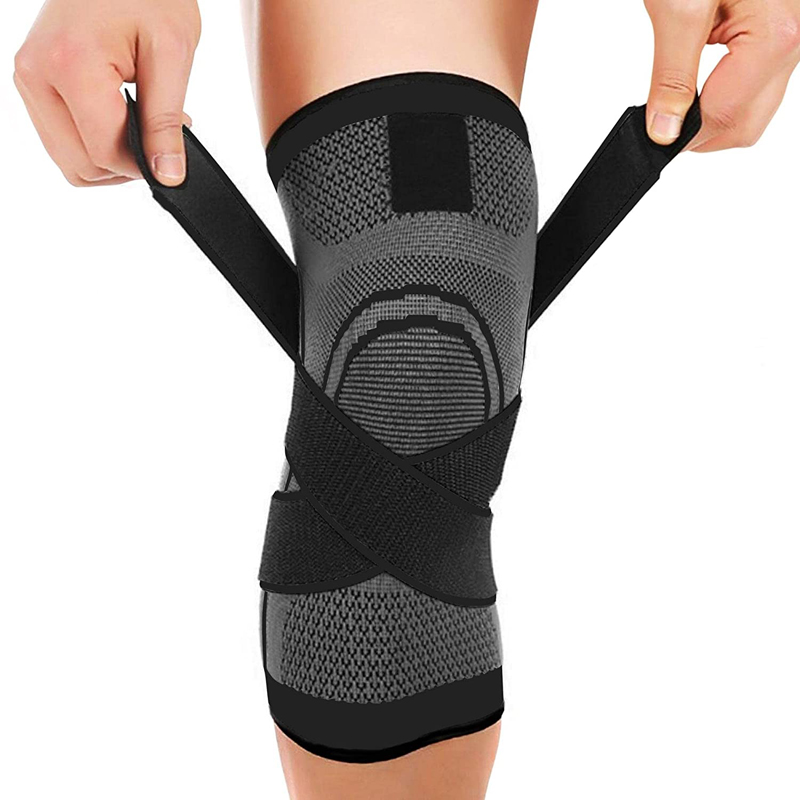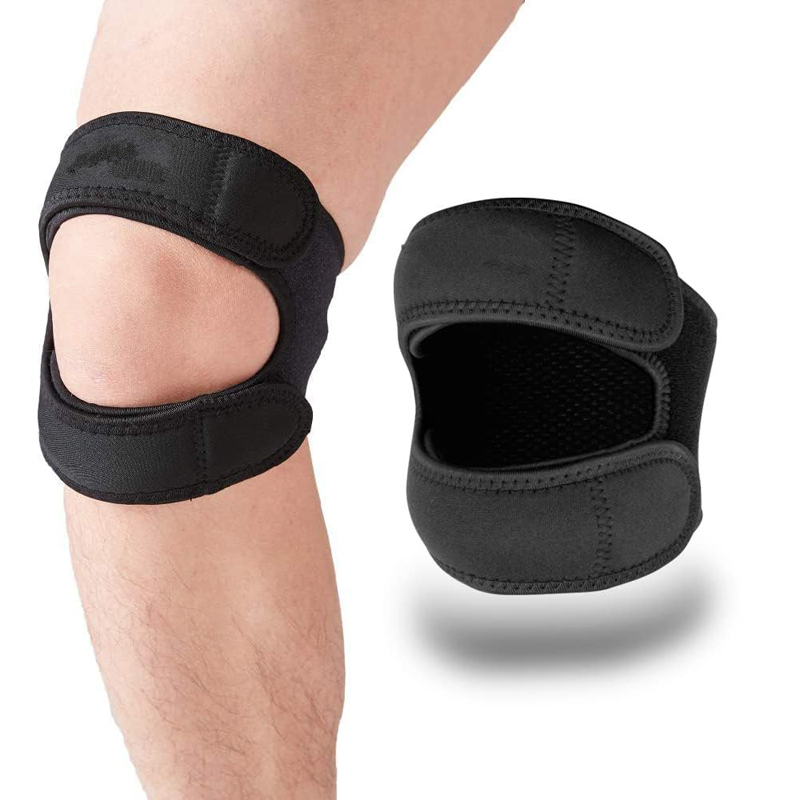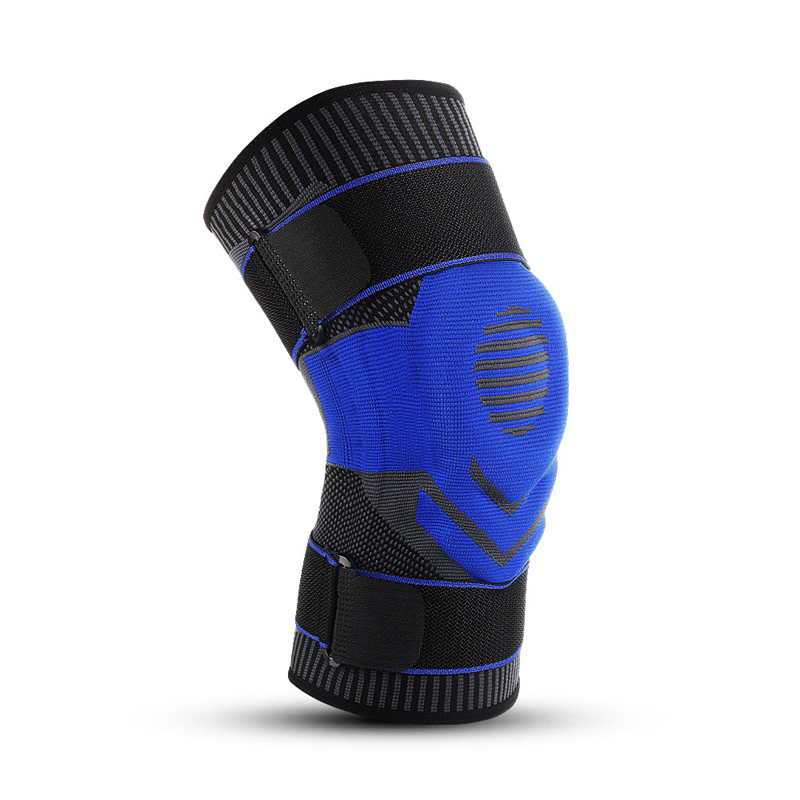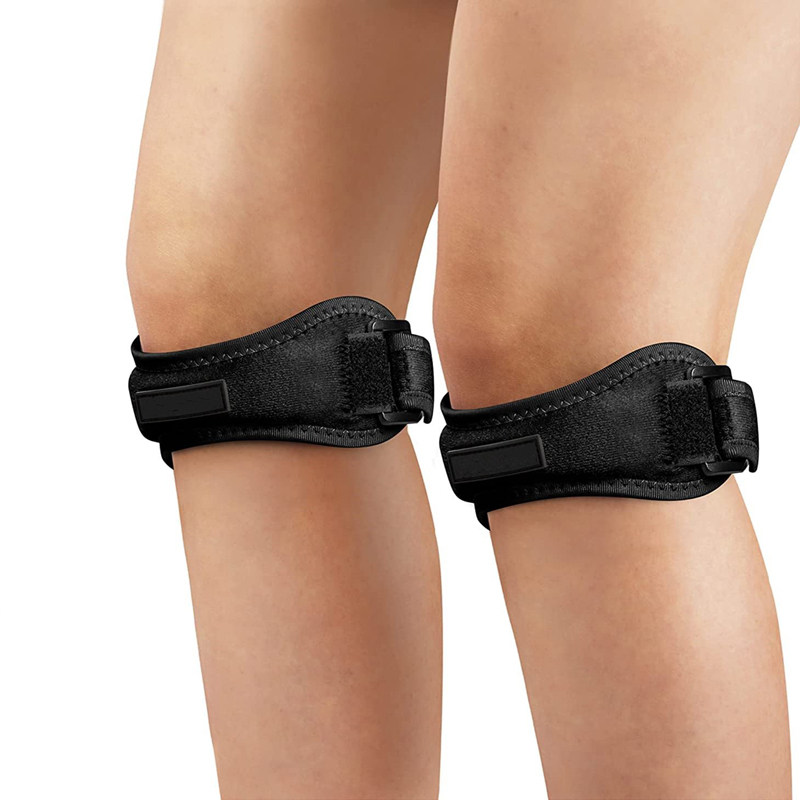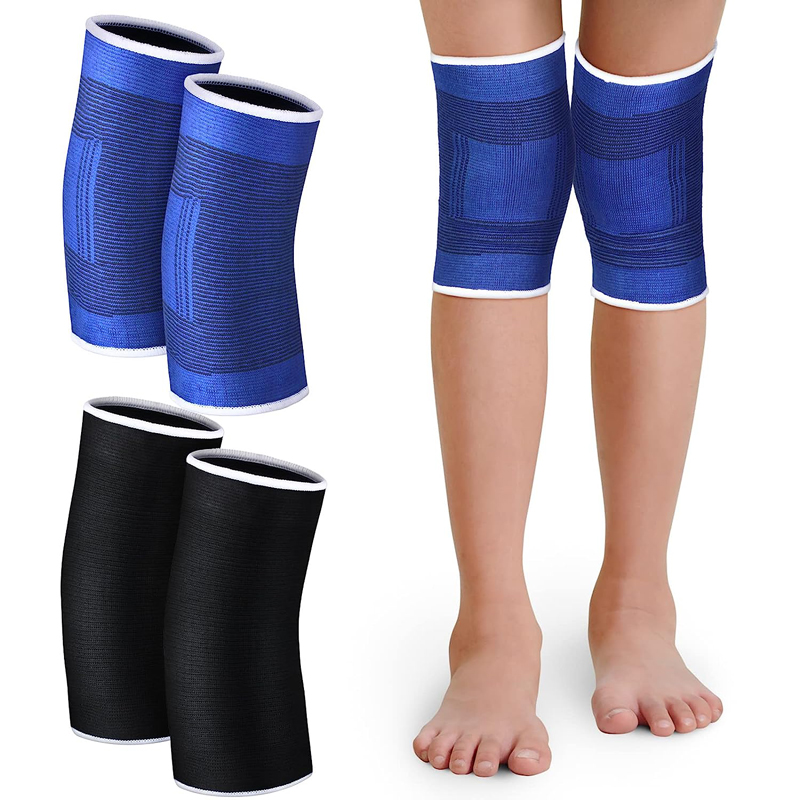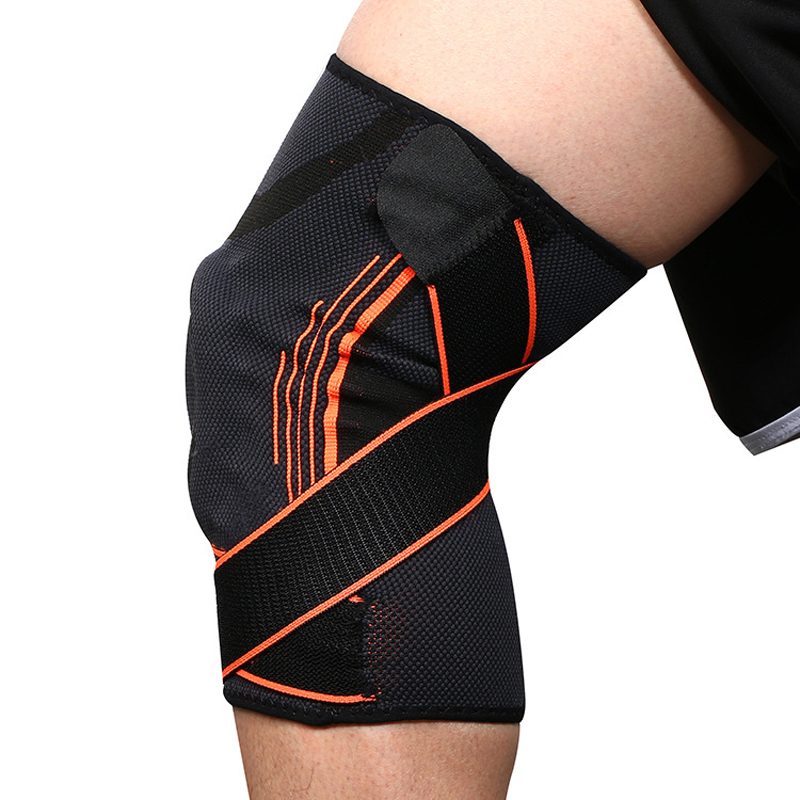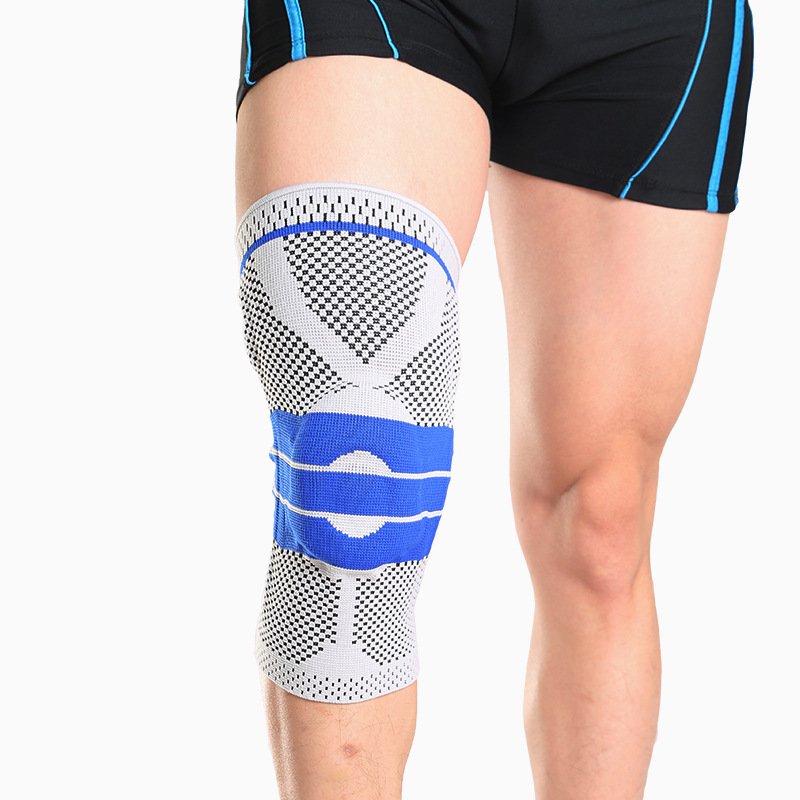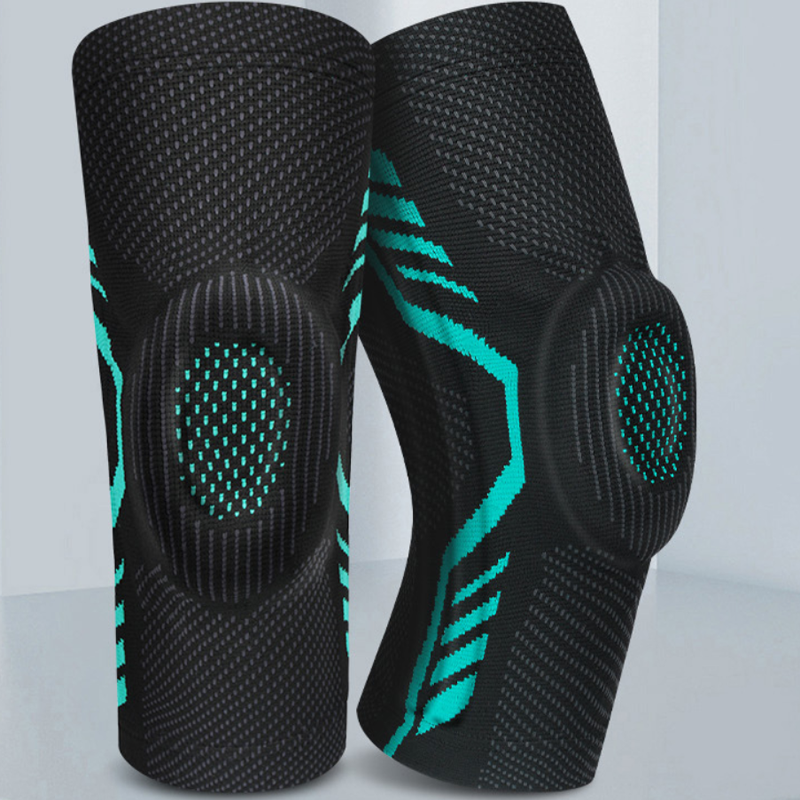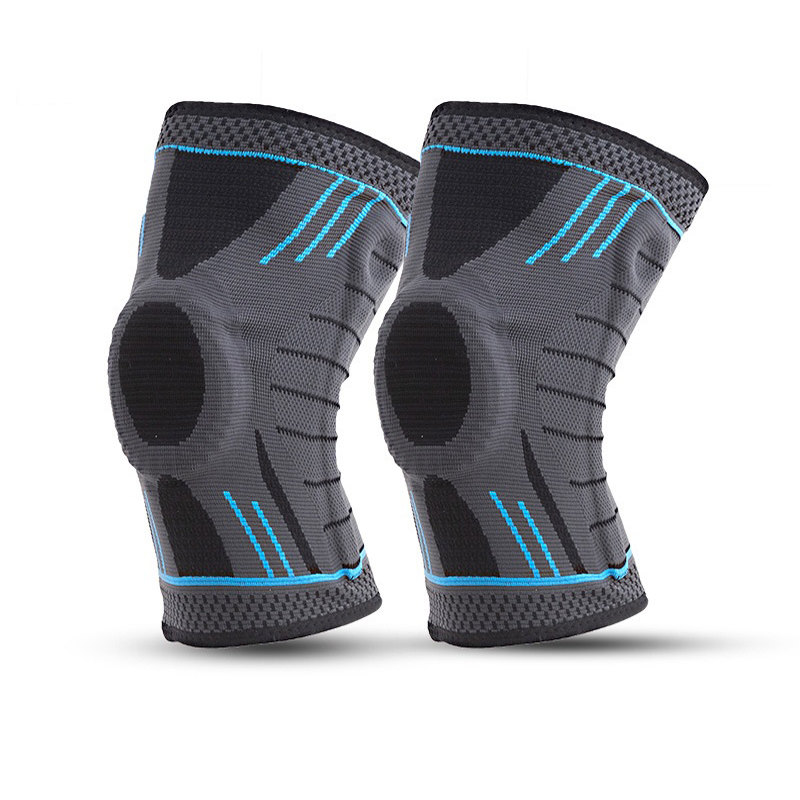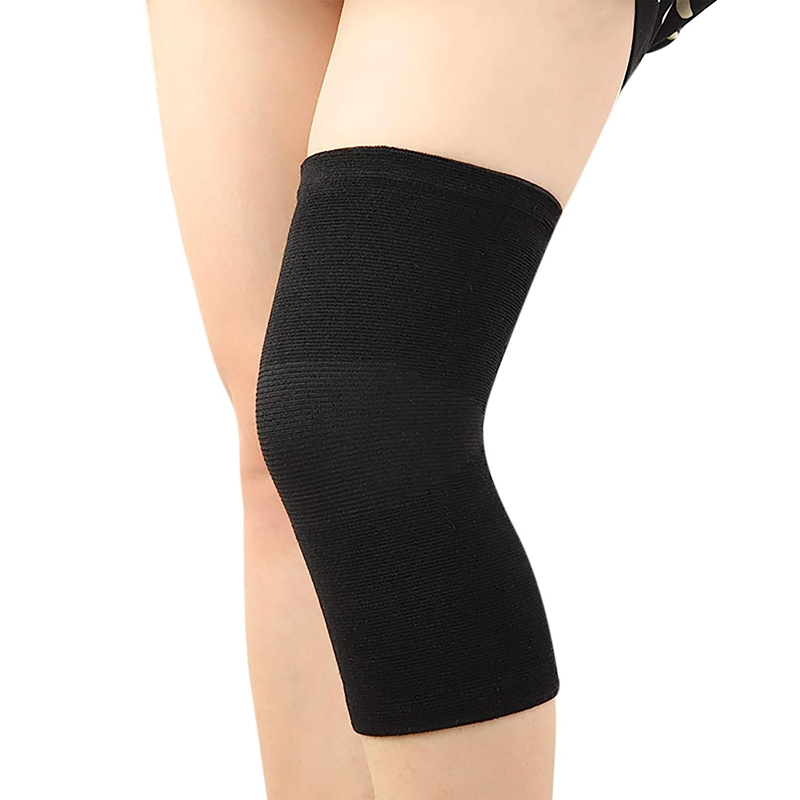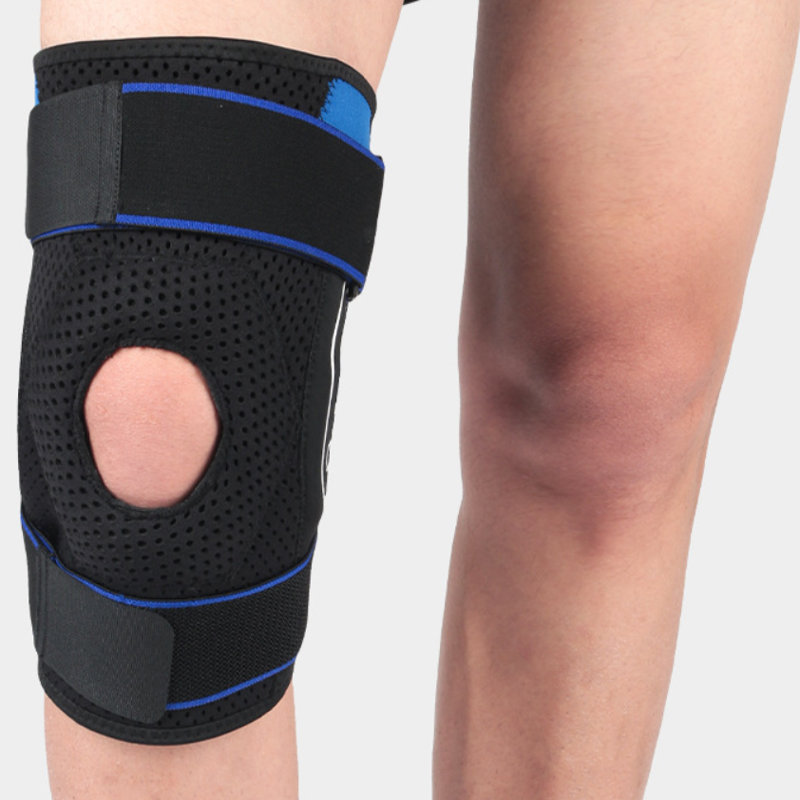China Knee Brace Manufacturer
We have many years of supply and after-sales experience
Knee Brace Supplier
• Perfect design: The design is reasonable and ergonomic, which can effectively protect the knee joint and reduce the risk of injury.
• Variety of varieties: With various colors and sizes, you can choose and match according to your personal preferences and needs.
• Affordable: Affordable and cost-effective, one of the best quality knee pads on the market.
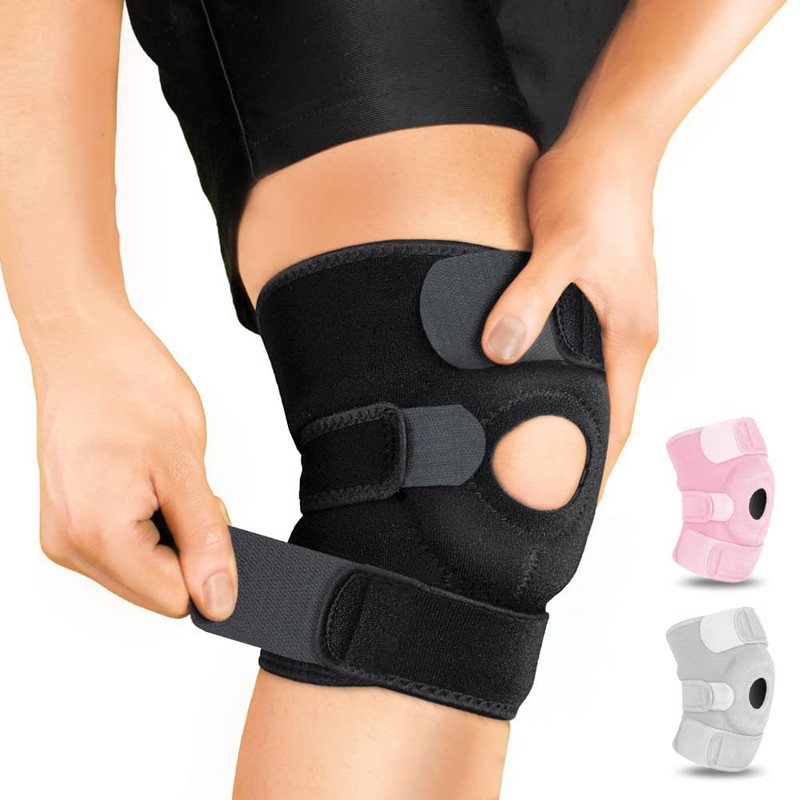
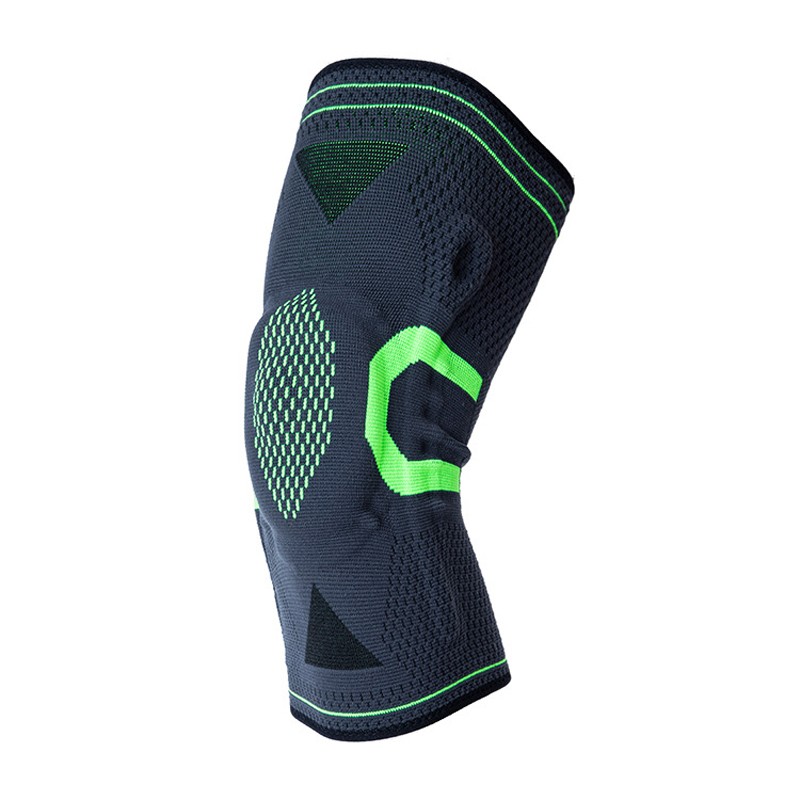
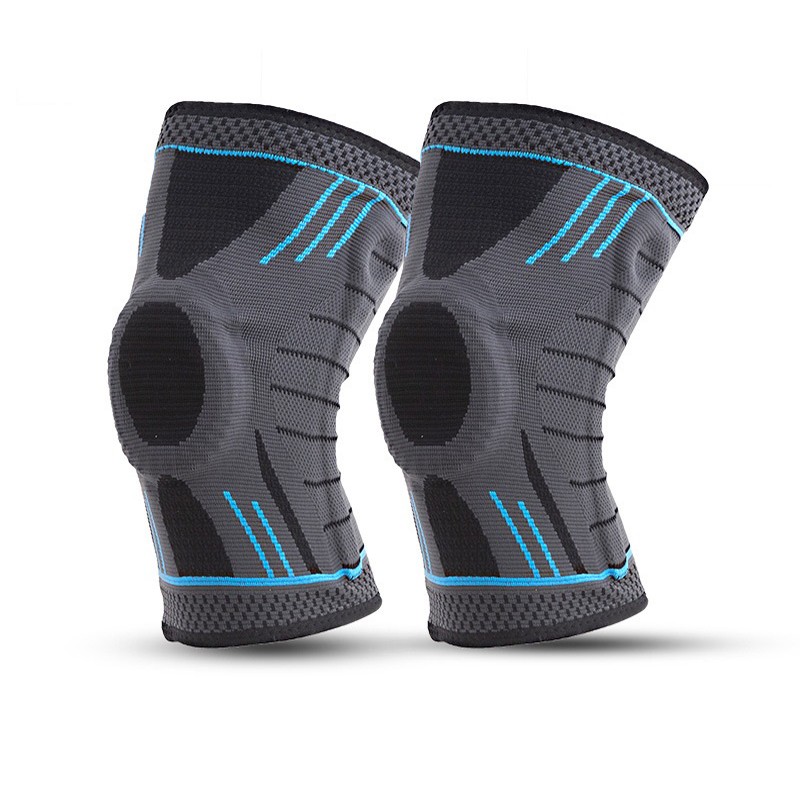

Why Choose Us






Our Certificates
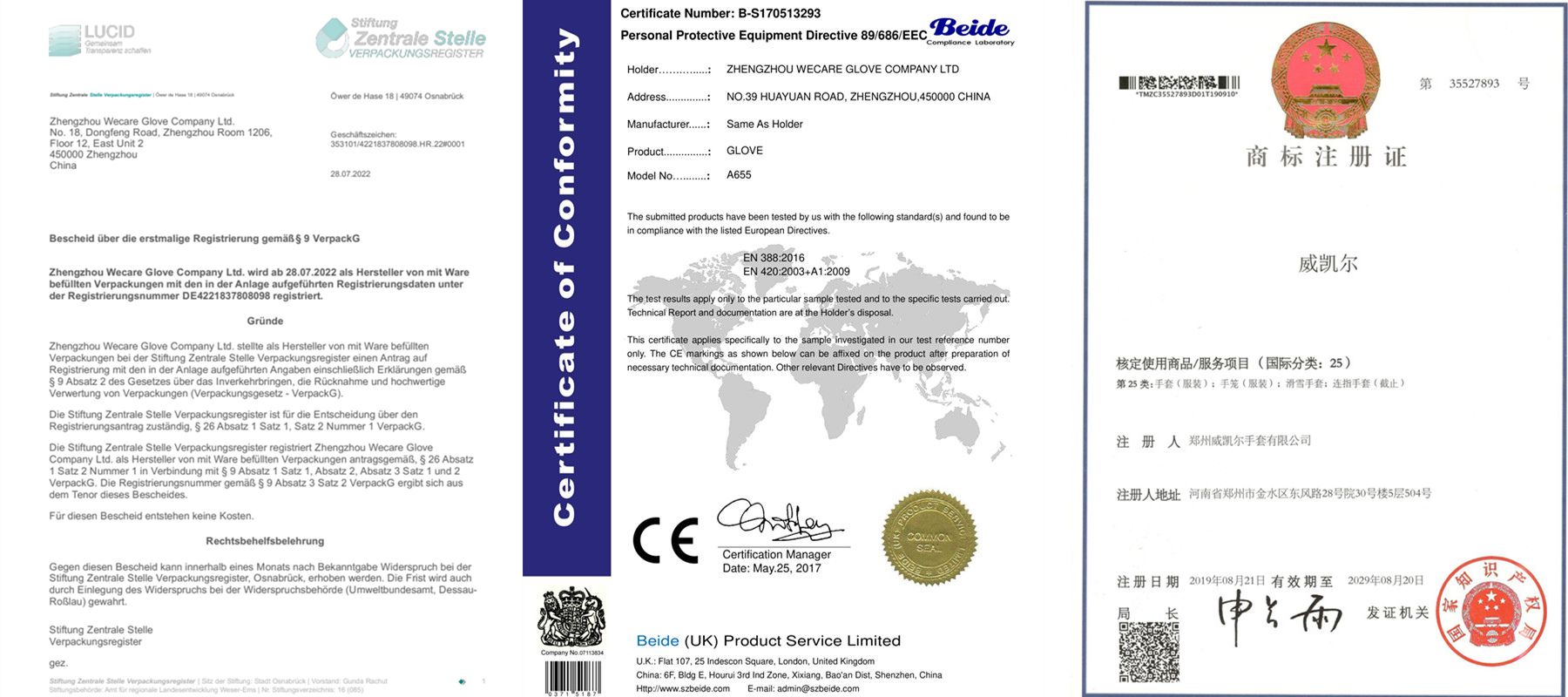
FAQ
Choose Professional Knee Brace Manufacturers and Suppliers
1. What is a Knee Brace?
A knee brace is a specialized orthopedic device designed to provide support, stability, and protection to the knee joint. It is commonly used by athletes, individuals recovering from knee injuries, or those with chronic knee conditions. This essential piece of equipment comes in various designs and materials, catering to different needs and levels of knee support. As a leading Knee Brace Manufacturer, Wecare understands the importance of choosing the right brace for your specific needs.
2. Different Types of Knee Support

The knee is one of the most crucial and vulnerable joints in the human body, bearing significant weight and facilitating various movements. To protect and provide stability to this vital joint, different types of knee supports are available. Let Wecare, a trusted Knee Brace Manufacturer, guide you through the different types of knee braces:
2.1 Knee Sleeves:
Knee sleeves are perhaps the most common and versatile type of knee support. Made from elastic materials, they slide over the knee and provide compression, which helps reduce swelling and inflammation. Knee sleeves are often worn by athletes during workouts or sports activities to keep the knee joint warm and maintain flexibility.
2.2 Hinged Knee Braces:
Hinged knee braces are a step up in terms of support and protection. These braces feature metal or polymer hinges on both sides of the knee, allowing controlled movement while preventing hyperextension or lateral instability. Hinged knee braces are commonly used in post-surgery rehabilitation or for moderate to severe knee injuries, such as ligament tears or meniscus injuries. The hinges provide added stability, making them ideal for individuals looking to return to physical activities safely. As a trusted Knee Brace Manufacturer, Wecare offers advanced hinged knee braces that prioritize comfort and performance.
2.3 Patellar Stabilizing Braces:
The patella, or kneecap, plays a crucial role in knee function, and patellar stabilizing braces are designed to support and align this structure. These braces typically have a padded ring around the patella, which helps keep it centered during movements. Patellar stabilizing braces are beneficial for conditions like patellar tendonitis, patellar tracking issues, or anterior knee pain.
2.4 Wraparound Knee Braces:
Wraparound knee braces offer a convenient and customizable fit. They come with adjustable straps that wrap around the knee, allowing users to tighten or loosen the brace according to their comfort level and support needs. These braces are suitable for various knee conditions, including mild sprains, strains, or general instability. The ability to adjust the fit makes wraparound knee braces a popular choice for those seeking personalized support. As a Knee Brace Manufacturer, Wecare ensures our wraparound braces offer both comfort and flexibility.
2.5 Prophylactic Knee Braces:
Prophylactic knee braces are primarily used for injury prevention, especially in high-impact sports that involve sudden changes in direction or collisions. Athletes wear these braces to reduce the risk of knee injuries, such as anterior cruciate ligament (ACL) tears. Prophylactic knee braces provide general support and are often made from lightweight materials to minimize interference with athletic performance.
2.6 Custom-Made Knee Braces:
For individuals with unique knee anatomy or specific medical conditions, custom-made knee braces offer the highest level of personalized support. These braces are crafted based on precise measurements and assessments of the individual's knee. They provide an exact fit, ensuring optimal support and comfort. Custom-made knee braces are commonly prescribed for individuals with severe injuries, congenital deformities, or degenerative joint conditions.
3. What Does a Knee Brace Do?
A knee brace is a versatile orthopedic device designed to perform a range of essential functions aimed at supporting, stabilizing, and protecting the knee joint. Whether you're an athlete seeking to prevent injuries or someone recovering from knee-related issues, understanding what a knee brace can do is vital to making an informed decision about its usage and benefits. As a leading Knee Brace Manufacturer, we are committed to offering solutions that meet the unique needs of our customers.
3.1 Provides Support and Stability:
One of the primary functions of a knee brace is to provide support and stability to the knee joint. Whether you have a mild strain or a more severe injury, a knee brace can help minimize excessive movement, reducing the risk of further damage. The brace wraps around the knee, offering a sense of security and preventing excessive side-to-side or forward-backward motion, giving you peace of mind throughout daily activities.
3.2 Relieves Pain and Discomfort:
Knee braces with compression capabilities can effectively reduce pain and discomfort associated with various knee conditions. By applying gentle pressure around the knee area, the brace helps to alleviate swelling and inflammation, providing relief to individuals suffering from conditions like arthritis, tendonitis, or general knee pain. As a trusted Knee Brace Manufacturer, we design braces that prioritize comfort and effective pain relief.
3.3 Aids in Injury Recovery:
For those recuperating from knee injuries or surgeries, a knee brace can play a crucial role in the recovery process. It supports the injured structures, such as ligaments or tendons, helping them heal more effectively. The brace also offers protection against unintended movements, minimizing the risk of reinjury during the healing phase. This is especially important when returning to physical activity after surgery.
3.4 Prevents Further Injuries:
Prophylactic knee braces are specifically designed to prevent injuries, particularly in high-impact sports or activities. Athletes frequently use these braces to reduce the risk of common knee injuries like anterior cruciate ligament (ACL) tears or collateral ligament strains. The brace acts as a preventive measure, providing additional support and stability during movements that may otherwise put excessive strain on the knee. As a premier Knee Brace Manufacturer, we ensure our prophylactic braces offer maximum protection for active individuals.
3.5 Aids in Post-Surgery Rehabilitation:
Following knee surgery, a knee brace can be an integral part of the rehabilitation process. It helps maintain the knee's alignment, preventing improper movements that could impede the healing progress. Additionally, the brace provides the necessary support as the knee regains strength and flexibility during the recovery period, helping speed up recovery.
3.6 Enhances Performance for Athletes:
In certain sports, athletes may wear knee braces not only for injury prevention but also to enhance performance. A well-fitted knee brace can boost an athlete's confidence during movements, allowing them to perform at their best without worrying about potential knee issues. Wecare, as a leading Knee Brace Manufacturer, designs performance-enhancing braces that allow athletes to compete at their highest level.
3.7 Improves Stability in Daily Activities:
For individuals with chronic knee conditions or mild instability, wearing a knee brace during daily activities can significantly improve stability. It enables them to move with greater ease and confidence, reducing the risk of sudden falls or awkward movements that could exacerbate their knee problems. Knee braces from Wecare are designed to provide reliable support for everyday mobility.
3.8 Customizable Support:
Custom-made knee braces offer the advantage of personalized support tailored to an individual's unique knee anatomy and specific medical conditions. They provide an exact fit, offering maximum support and comfort for those with complex knee issues. As a professional Knee Brace Manufacturer, we specialize in crafting custom knee braces to meet the precise needs of each customer.
4. How to Wear a Knee Brace?

Wearing a knee brace properly is essential to ensure maximum effectiveness, comfort, and support for your knee joint. Whether you're recovering from an injury, looking to prevent one, or seeking relief from knee pain, here's a step-by-step guide on how to wear a knee brace correctly, brought to you by a trusted Knee Brace Manufacturer:
Step 1. Select the Right Knee Brace:
Before wearing a knee brace, ensure that you have the correct type and size for your specific needs. Different knee braces cater to different conditions, so choose one that aligns with your goals, whether it's for injury prevention, post-surgery rehabilitation, or general support during physical activities. As a leading Knee Brace Manufacturer, we offer a variety of braces designed for different needs.
Step 2. Clean and Dry Your Knee:
Before putting on the knee brace, make sure your knee is clean and dry. This step is crucial to prevent skin irritation or discomfort during prolonged use. If you have any cuts or abrasions on your knee, consider using a protective bandage or gauze before wearing the brace to ensure comfort and hygiene.
Step 3. Position the Knee Brace Correctly:
Align the knee brace with your knee joint. The brace should cover the kneecap (patella) and extend slightly above and below it. Ensure that any adjustable straps or closures are facing outward for easy access. This proper positioning ensures the brace provides optimal support and protection.
Step 4. Insert Your Leg into the Brace:
Slide your foot through the opening of the knee brace and pull it up to your knee. Gently pull the brace into position, making sure it fits snugly but not too tight. If you're wearing a wraparound knee brace, wrap the adjustable straps around your leg and secure them firmly yet comfortably. Wecare, a trusted Knee Brace Manufacturer, offers easy-to-wear designs for maximum convenience.
Step 5. Adjust the Fit:
If the knee brace has adjustable straps, customize the fit according to your comfort and support requirements. Ensure that the brace is secure but not overly tight, as excessive compression can cause discomfort and restrict blood flow. A well-fitted brace ensures effective support without compromising circulation.
Step 6. Check for Proper Alignment:
Double-check the alignment of the knee brace to ensure it sits correctly on your knee. The kneecap should be centered within the brace's patellar opening. The brace should also cover the lateral and medial sides of your knee joint evenly. Proper alignment is essential for optimal support and comfort.
Step 7. Test Range of Motion:
After putting on the knee brace, test your range of motion by bending and straightening your knee. The brace should not restrict your movement excessively but provide enough support to stabilize the joint during activities. A quality knee brace allows for movement while stabilizing the knee.
Step 8. Wear the Brace During Appropriate Activities:
Wear the knee brace during activities that require additional support or protection. For some individuals, this may mean wearing the brace during workouts, sports activities, or daily tasks that involve excessive knee stress. Follow the recommendations provided by your healthcare professional or orthopedic specialist regarding the appropriate usage of the knee brace.
Step 9. Remove the Brace for Rest and Sleep:
Give your knee a chance to rest by removing the brace during periods of prolonged inactivity or sleep, unless otherwise advised by your healthcare provider. This allows your skin to breathe and promotes better circulation in the knee area. Proper rest is crucial for effective recovery.
Step 10. Maintain and Clean the Brace:
Regularly clean and maintain your knee brace according to the manufacturer's instructions. Keeping the brace clean and free from dirt and sweat will extend its lifespan and ensure hygienic usage. A well-maintained knee brace provides consistent support and comfort over time.
5. Knee Braces Medical Related Questions

5.1 How Long to Wear Knee Brace for Torn Meniscus?
The duration of wearing a knee brace for a torn meniscus can vary depending on the severity of the injury and the treatment plan prescribed by your healthcare professional. In most cases, knee braces are used during the initial phase of injury recovery to provide support and reduce strain on the torn meniscus. Typically, wearing the brace for 2 to 6 weeks is common, but this may be extended if needed, especially during activities that put additional stress on the knee. As your knee heals and gains strength, your doctor may advise you to gradually reduce the brace usage. Always follow your healthcare provider's instructions for the most appropriate duration of knee brace wear. As a trusted Knee Brace Manufacturer, we offer a range of braces that support your recovery process at every stage.
5.2 Do Knee Braces Help with Knee Pain?
Yes, knee braces can be beneficial in managing knee pain. Knee braces with compression capabilities provide gentle pressure around the knee, which helps reduce swelling and inflammation, thus alleviating pain. Additionally, knee braces that offer support and stability can help unload the stress on the knee joint, providing relief to individuals suffering from knee conditions like arthritis, tendonitis, or ligament strains. It is essential to choose the right type of knee brace that suits your specific knee pain issue and consult with a healthcare professional for personalized recommendations. As a leading Knee Brace Manufacturer, we offer a variety of knee braces designed to help reduce pain and improve your mobility.
5.3 Should I Wear a Knee Brace to Bed?
Wearing a knee brace to bed is generally not necessary unless specifically recommended by your healthcare provider. While knee braces can offer support and stability during daily activities or physical exercises, they are not typically designed for prolonged wear, especially during sleep. Allowing your knee to rest without the brace during bedtime can promote better circulation and may be more comfortable. However, some individuals with severe knee injuries or post-surgery recovery may be advised to wear a knee brace to bed for a specific duration. Always consult with your healthcare provider for guidance. Wecare, a trusted Knee Brace Manufacturer, provides high-quality knee braces that offer the right level of support for various needs, including sleepwear for recovery.
5.4 Does a Knee Brace Help With Arthritis?
Yes, knee braces can help with arthritis by providing support, stability, and pain relief to the affected knee joint. Arthritis leads to inflammation and deterioration of the joint, causing pain and reduced mobility. Knee braces that offer compression can help reduce swelling and discomfort associated with arthritis. Additionally, unloading knee braces can shift weight away from the affected part of the knee, reducing pressure on the joint and easing pain during movement. Custom-made knee braces, specifically designed for arthritis patients, can provide even more targeted support based on the individual's knee anatomy and condition. As a leading Knee Brace Manufacturer, Wecare specializes in custom-made knee braces tailored to your unique needs, offering the best support for arthritis sufferers.
6. Knee Brace User Guide
6.1 How to Clean a Knee Brace?
Regularly cleaning your knee brace is essential to maintain its effectiveness and hygiene. Here's a simple step-by-step guide to cleaning your knee brace:
1.Check the Knee Brace Manufacturer's Instructions: Before cleaning the knee brace, refer to the manufacturer's instructions for specific cleaning guidelines. Some knee braces may have unique materials or components that require special care.
2.Hand Wash or Use a Mild Detergent: For most knee braces, hand washing is the preferred method. Use a mild detergent mixed with warm water to clean the brace thoroughly. Avoid harsh chemicals or bleach, as they may damage the brace's materials.
3.Gently Scrub the Brace: Use a soft cloth or sponge to gently scrub the entire surface of the knee brace. Pay close attention to areas that come into direct contact with your skin, as these are more prone to sweat and dirt buildup.
4.Rinse Thoroughly: After scrubbing, rinse the knee brace under clean running water to remove any soap residue.
5.Air Dry: Allow the knee brace to air dry completely in a well-ventilated area. Avoid direct sunlight or heat sources, as excessive heat can warp or degrade the brace's materials.
6.Store Properly: Once the knee brace is dry, store it in a cool and dry place. Consider using a breathable storage bag to prevent dust accumulation.
6.2 How to Keep Knee Brace From Sliding Down?
A knee brace that slides down can be frustrating and less effective. Follow these tips to keep your knee brace in place:
1. Choose the Right Size: Ensure you have the correct size of knee brace that fits snugly without being overly tight. A properly fitting brace is less likely to slide down during movement.
2. Clean and Dry Skin: Make sure your knee and the surrounding skin are clean and dry before putting on the brace. Moisture and sweat can contribute to the brace slipping.
3. Adjust Straps Properly: If your knee brace has adjustable straps, ensure they are tightened appropriately without causing discomfort. The straps should hold the brace securely in place without cutting off circulation.
4. Use Anti-Slip Gel or Strips: Consider using anti-slip gel or strips designed for knee braces. These products provide additional friction between the brace and your skin, helping to prevent sliding.
5. Wear Compression Shorts or Sleeves: Wearing compression shorts or sleeves underneath the knee brace can create a better grip on the skin, reducing the chances of the brace slipping.
6.3 How to Put On a Knee Brace Properly?
Putting on a knee brace properly ensures optimal support and comfort. Here's how to do it:
1. Position the Brace Correctly: Align the knee brace with your knee joint, ensuring the patellar opening is centered over the kneecap.
2. Slide Foot Through: Slide your foot through the opening of the knee brace and pull it up to your knee.
3. Adjust Straps (If Applicable): If the knee brace has adjustable straps, secure them according to your comfort and the support level needed.
4. Check Alignment: Double-check that the brace is evenly positioned on both sides of your knee and that the kneecap remains centered in the opening.
5. Test Range of Motion: Bend and straighten your knee to ensure the brace allows natural movement without restriction.
6.4 How Long Can You Wear a Knee Brace?
The duration of knee brace wear varies depending on the specific condition and the advice of your healthcare provider. For acute injuries or post-surgery recovery, wearing the brace for a few weeks to a few months may be recommended. For chronic conditions or preventive purposes during sports activities, the brace may be worn for shorter periods, such as during workouts or games. It is essential to follow your healthcare provider's instructions regarding the appropriate duration of knee brace wear to avoid any adverse effects.
In the End
In the end, a knee brace serves as a reliable ally in safeguarding and supporting one of our body's most vital joints. Whether you're an athlete striving to prevent injuries or an individual recovering from a knee-related issue, the right knee brace can make a remarkable difference in your quality of life.

